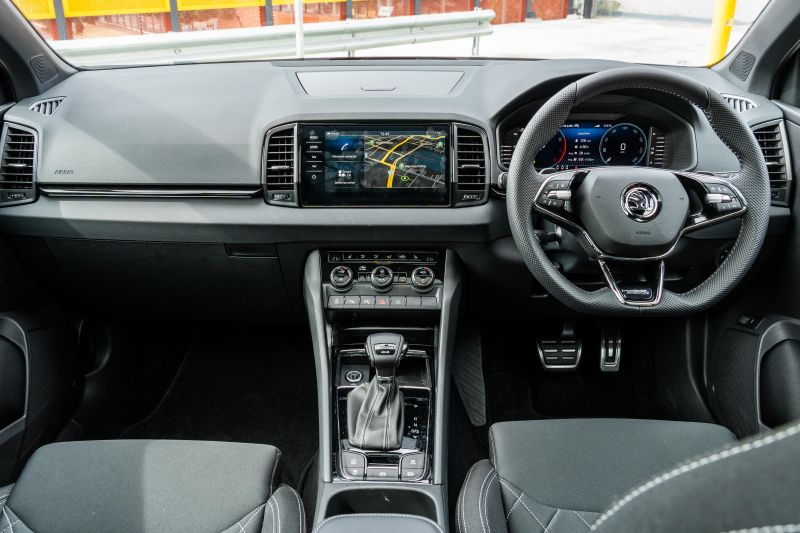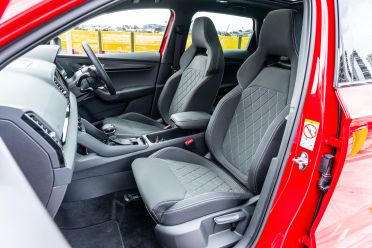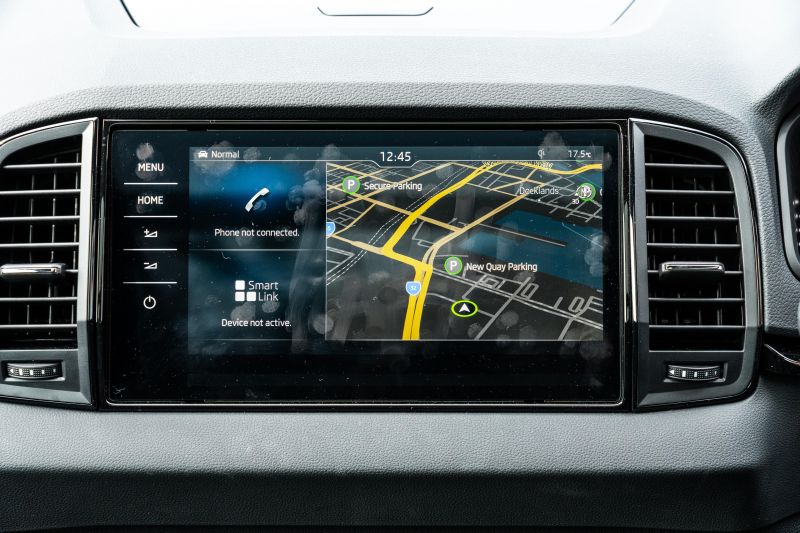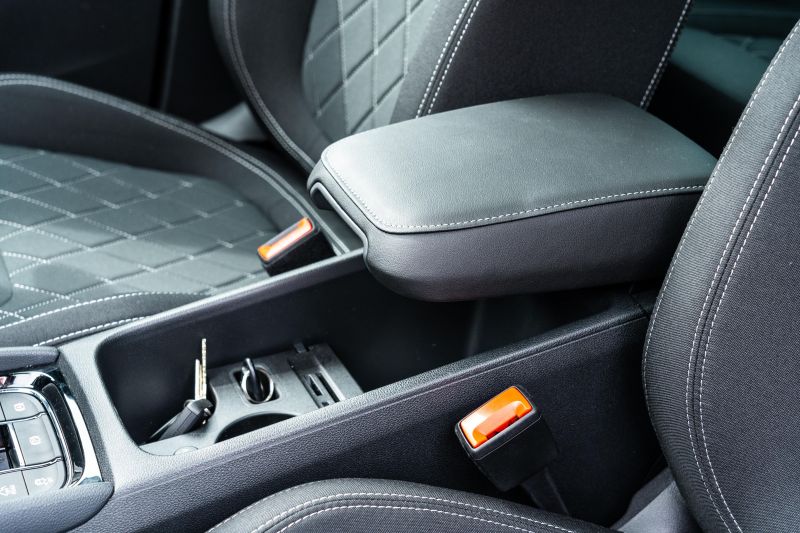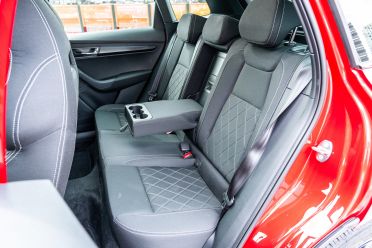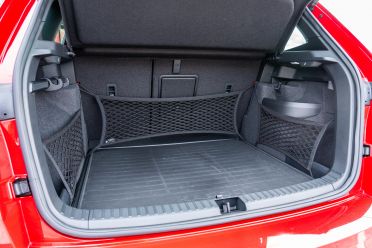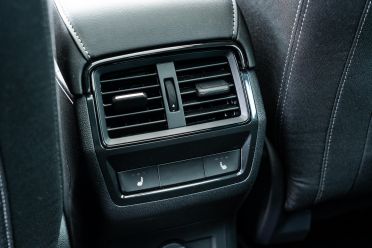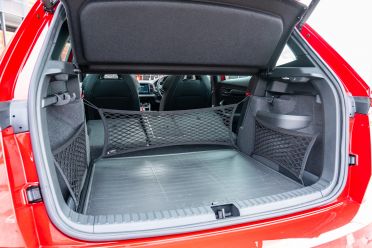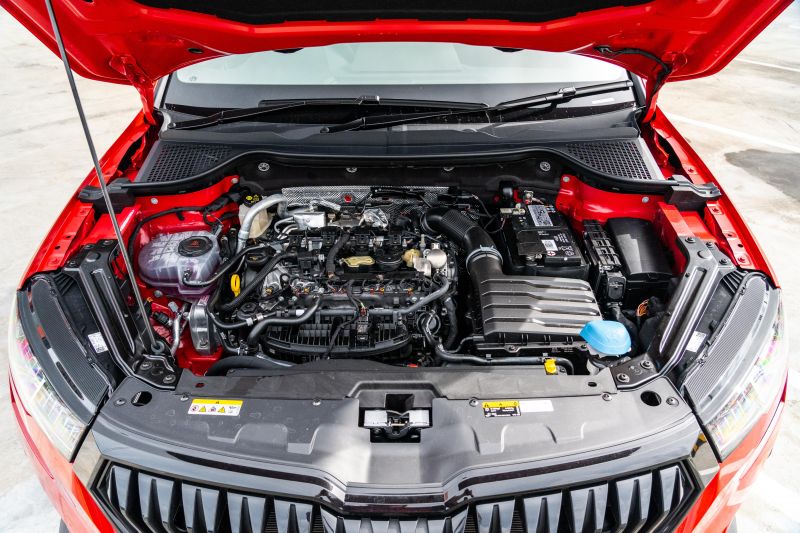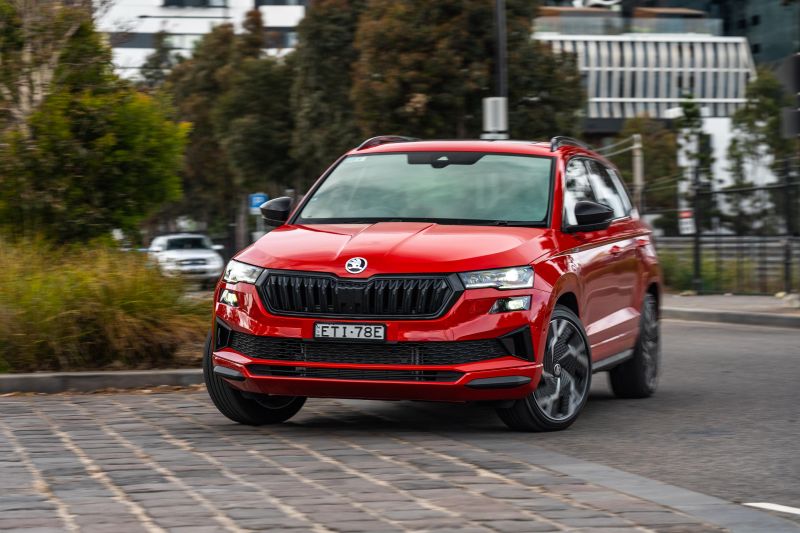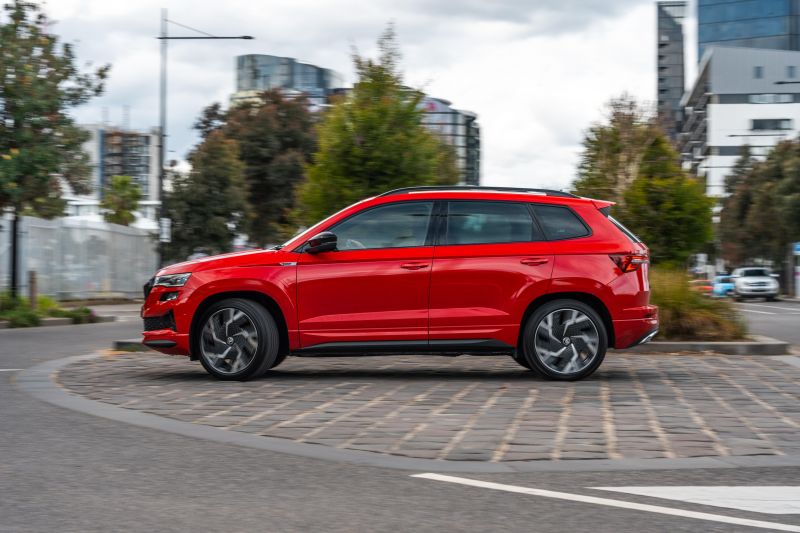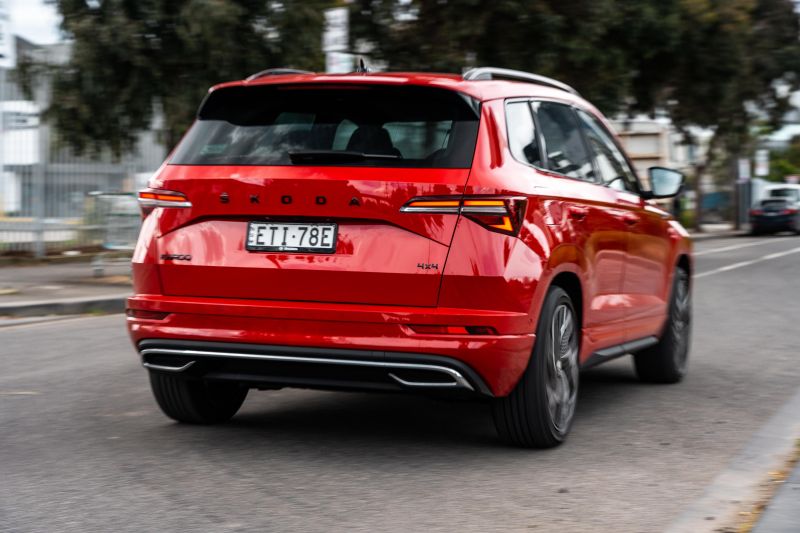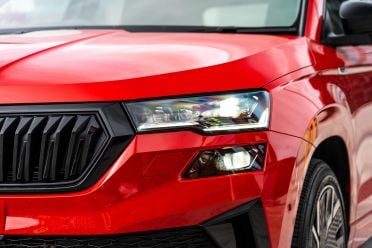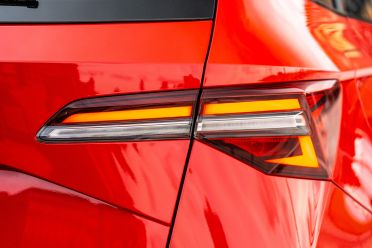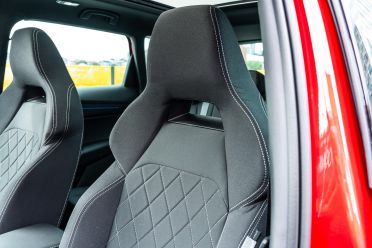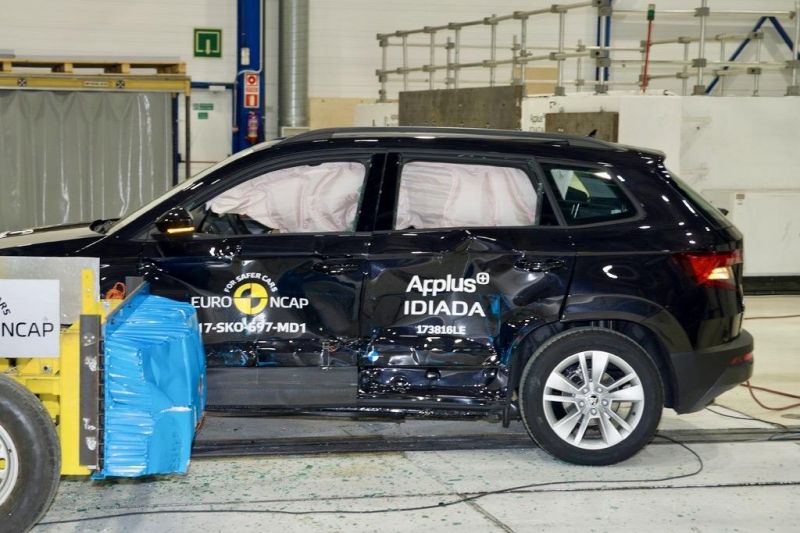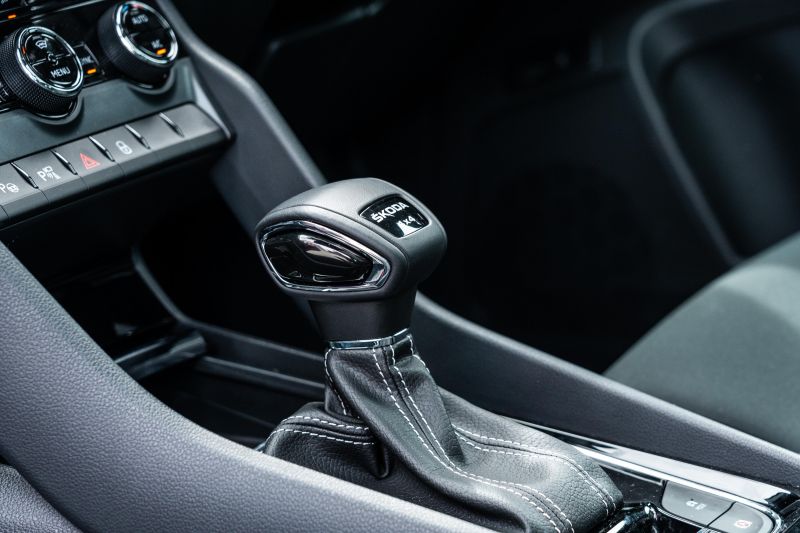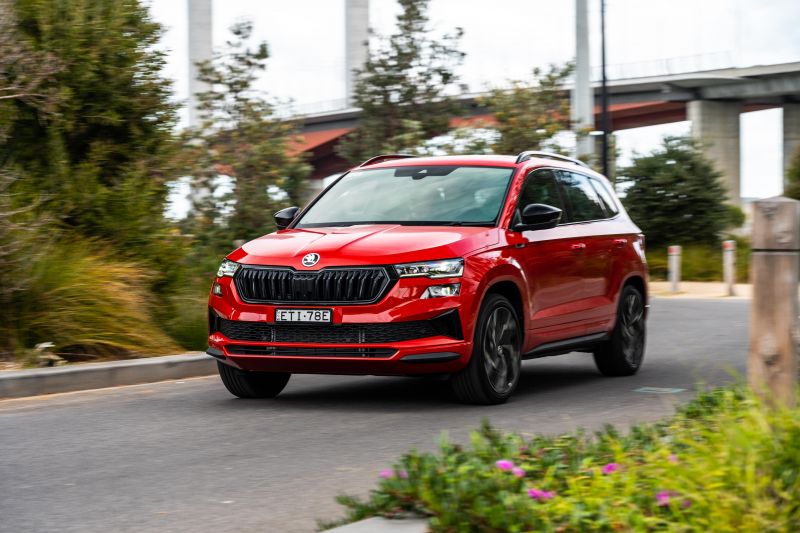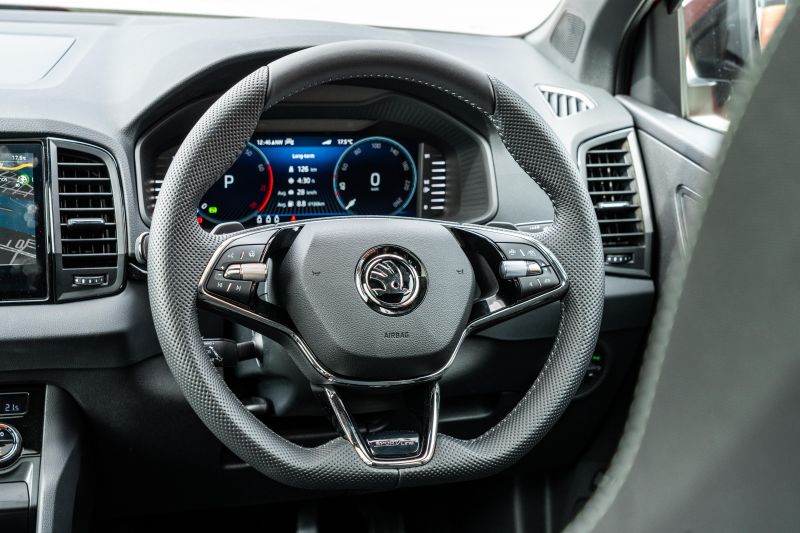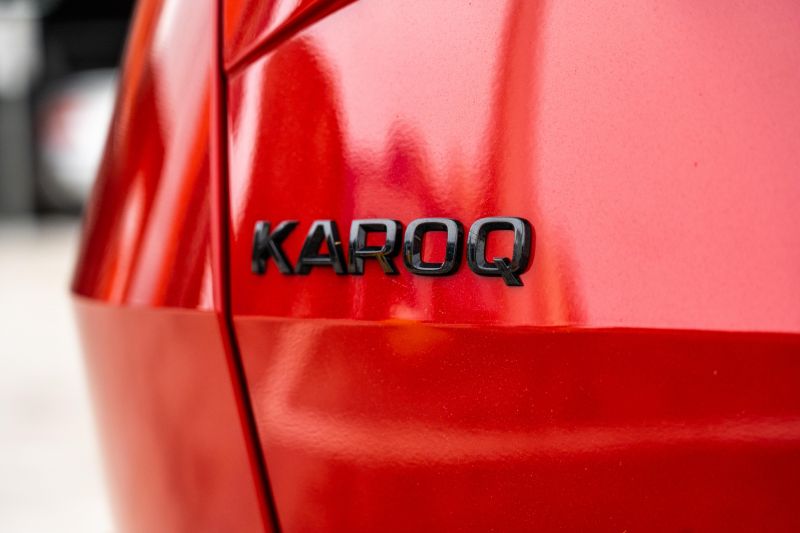The Volkswagen Tiguan might steal the headlines, but it’s not the only mid-sized SUV in the Volkswagen Group stable competing for your hard-earned.
If you’re keen on something with plenty of space (but a dash of sporty spice) there’s also the new, Spanish-built Cupra Formentor, or the Czech-made Skoda Karoq Sportline 4×4 on test here.
Treated to a mid-life facelift earlier in 2022, the Karoq Sportline features a sharper look than before and more up-to-date interior technology than before. It’s also more expensive, although Skoda points to extra standard equipment as justification for its steeper sticker.
Is the Karoq Sportline still a compelling alternative to more mainstream rivals?

How much does the Skoda Karoq Sportline 4×4 cost?
With a starting price of $49,990 drive-away, the Karoq Sportline 4×4 represents decent value alongside the Volkswagen Tiguan 132TSI Life ($46,690 plus on-roads) with which it shares its bones.
Not only does the Skoda have a sportier look, it has a newer, more powerful 140kW version of the Volkswagen Group’s widely used 2.0-litre turbo petrol engine.
The price as-tested on our Sportline, however, was $59,040 drive-away due to the options fitted. That’s getting right up there, given you can have a Cupra Formentor VZ for $58,490 drive-away with a full suite of safety features and assists standard.
The range-topping Mazda CX-5 Akera 2.5T from Japan is priced from $53,880 before on-roads, and packs a turbocharged punch like its Skoda rival.
2023 Skoda Karoq pricing:
- Skoda Karoq Style: $42,990
- Skoda Karoq Sportline 4×4: $49,990
Prices are drive-away
What is the Skoda Karoq Sportline 4×4 like on the inside?
Skoda made its name building spacious, practical cars full of features that surprise and delight, and the Karoq is in keeping with that tradition.
The little Karoq borrows plenty from the larger Kodiaq, with a shrunken take on its simple dashboard and a range of controls that are refreshingly easy to use. Touch buttons? Not here; Skoda has stuck with buttons and dials.
Up front, the bucket-style seats have the same basic design as those in the Kodiaq Sportline, which means they walk the tightrope between support and comfort well. They’re home to some of the toastiest bum warmers in the business, but the Thermoflux interior trim doesn’t feel special like leather or suede.
Power adjustment is also a notable omission given the car’s billing as a flagship model, and its sticker price.
The Virtual Cockpit digital instruments are still the benchmark for digital instruments at this end of the market, with a crisp 10.25-inch display and just the right amount of customisation options.
It works with an 8.0-inch central touchscreen infotainment system, complete with satellite navigation, Apple CarPlay and Android Auto, and DAB digital radio.
Smartphone mirroring is wireless after the recent update, and the system is every bit as snappy as you’d expect.
Make sure you keep a microfibre cloth handy though, because there’s plenty of gloss black around to get grubby.
USB-A has been subbed for USB-C up front, and there’s still a wireless charge pad below the dashboard. Storage spaces are plentiful, and the open transmission tunnel with its reversible cupholders/coin tray is smartly designed.
With its boxy profile and tall windows, the Karoq is a better place to spend time than some of its bigger and better-known rivals.
Legroom is solid, there’s plenty of toe-room beneath the front seats, and headroom is good back there despite the panoramic sunroof fitted to our tester. The inclusion of air vents and USB charge points will endear the Karoq to parents as well.
Fans of the Skoda Roomster (RIP) will be pleased to know an evolution of the clever VarioFlex seating system is available in the base Karoq, although it’s not featured in the Sportline.
There is a clever sliding rack system back there for hanging shopping bags, and netting to keep loose items from sliding around. Luggage capacity is quoted as 521-1630L in the Sportline, down from the 588-1810L in the Style FWD.
Issues? The materials are good in most places, with plenty of soft touch on the dashboard and door tops, but there are still a few scratchy plastics down low in the front.
The plastic cover for the wireless phone charger is also a bit cheap in its movement, but there isn’t really much to complain about here.
What’s under the bonnet?
Step up to the Karoq Sportline 4×4 and you get a meatier 2.0-litre turbo-petrol making 140kW and 320Nm (from 1500rpm), with all-wheel drive and a seven-speed dual-clutch transmission.
Entry-level cars feature a 1.4-litre engine making 110kW and 250Nm, driving the front wheels via an eight-speed auto.
Skoda claims fuel consumption of 6.6 litres per 100km and a sprightly 0-100km/h time of 7.0 seconds, putting it in a similar realm to a Mk V Golf GTI.
The fuel tank holds 55 litres, and the Karoq drinks 95 RON premium unleaded. Unlike some models in the Volkswagen Group stable, it features a petrol particulate filter (PPF) that helps minimise harmful emissions, but also necessitates higher quality, lower-sulphur fuel.
How does the Skoda Karoq Sportline 4×4 drive?
The Karoq is every bit as polished as you’d expect.
The 2.0-litre engine is used in everything from the VW Polo GTI to the Audi Q5, and it’s a smooth operator. Put your foot down and there’s a hint of lag, before offering a decent shove in the back that makes Skoda’s claim for the 100km/h sprint (7.0 seconds) feel realistic.
Peak torque comes on tap at just 1500rpm and sticks about until 4000rpm, so it’s never light on for performance when you lean on the throttle at low engine speeds.
Regardless of what you’re doing, it’s a very grown-up powertrain. It barely gets above a whisper at a cruise, and even when you’re pushing it isn’t uncouth or thrashy like the small-displacement engines in some rivals.
The seven-speed dual-clutch transmission is a natural match for the engine. It’s smooth enough off the mark, and feels more fluid here than when partnered with lower-output engines in the Volkswagen Group.
When you’re up and running it shifts crisply, shuffling to the tallest ratio possible on light inputs to save fuel, but it kicks down quickly when you lean harder on the right-hand pedal.
Sport mode locks the transmission into a lower gear, which is handy if you’re bombing along a mountain pass – but if you’re in a hurry, it’s generally better to take control using the paddles behind the wheel.
Ride quality on the Sportline’s 19-inch wheels, which have been redesigned with aero-style covers for 2022, sits where it should. It’s firmer than the base Karoq Style in the default drive mode, although it’s far from unbearable.
Flicking into Comfort slackens the dampers right off for a floaty, laid-back feeling, while Sport is arguably too firm for day-to-day driving.
Sling it into a corner and, with the suspension in its stiffest mode, the Karoq handles like a slightly taller Volkswagen Golf. Body control is impressive and the handling is predictably neutral, making this a crossover capable of getting a move on.
The standard adaptive cruise control system is smooth and smart – although the undertaking protection is annoying on Australian roads – and the optional lane-keep assist does a good job nudging you back between the white lines.
Combined with solid noise suppression by European SUV standards and plenty of turbo torque for overtaking at 100km/h, the assists make the Karoq a capable cruiser.
It’s a shame Skoda makes you pay extra for a full suite of driver assists even in the range-topping Sportline, however. Blind-spot monitoring and rear cross-traffic should be both standard, as should lane assist given this car’s sticker price.
What do you get?
Karoq Style highlights:
- 18-inch alloy wheels
- Space-saver spare
- LED headlights
- LED tail lights with dynamic indicators
- Fog lights
- Electric folding, heated side mirrors
- Rear spoiler
- Silver roof rails
- Rear privacy glass
- Electric tailgate with hands-free operation
- Keyless entry and start
- Rain-sensing wipers
- Front and rear parking sensors
- Door welcome lights with Skoda logo
- VarioFlex removable rear seats
- Front and rear footwell lighting
- Front and rear reading lights
- 3-spoke leather sports steering wheel
- Fabric seat trim
- Floor mats
- Selectable drive modes
- Height-adjustable front seats
- 10.25-inch Virtual Cockpit instrument cluster (10.25-inches)
- 8.0-inch touchscreen infotainment system
- Wireless Apple CarPlay, Android Auto
- DAB digital radio
- Eight-speaker sound system
- Wireless phone charger
- USB-C port connectivity
- Dual-zone climate control
- Luggage nets
Karoq Sportline 4×4 adds:
- 19-inch alloy wheels
- Space-saver spare
- Matrix LED headlights
- Adaptive front lighting system
- Adaptive high beam
- Fog lights with corner function
- Black shine exterior accents
- Front grille frame
- Door mirrors
- Roof rails
- Window frames
- Black rear diffuser with chrome inserts
- Black headliner and pillar trim
- Rear sports seats (replace VarioFlex)
- Piano black dashboard trim
- Carbon-look door trim
- Stainless steel pedals
- 3-spoke leather sports steering wheel
- Paddle shifters
Options
- Premium Pack: $5900
- 9.2-inch navigation system w/ gesture control
- Heated front, rear seats
- Heated steering wheel
- Heat insulating windshield
- Headlight washers
- Adaptive chassis control (dampers)
- Park assist
- Lane assist
- Surround-view cameras
- Traffic jam assist
- Emergency assist
- Panoramic sunroof: $1900
- Side steps: $1200
- Side Assist with rear cross-traffic alert: $1250
Is the Skoda Karoq Sportline 4×4 safe?
The Skoda Karoq wears a five-star ANCAP safety rating based on Euro NCAP tests conducted in 2017.
All variants are covered by this rating, based on category scores of 93 per cent for adult occupant protection, 79 per cent for child occupant protection, 73 per cent for pedestrian protection, and 58 per cent for safety assist.
Standard safety equipment includes:
- 7 airbags incl. driver’s knee
- AEB incl. Pedestrian detection
- Adaptive cruise control
- Driver fatigue detection
- Manoeuvre Braking Assist
- Multi-collision brake
- Front, rear parking sensors
- Reversing camera
- Tyre pressure monitoring
Unfortunately, lane-centring, blind-spot monitoring, and traffic jam assist are tied up in an option package. In 2022, in a car priced like the Karoq, missing blind-spot assistance in particular really isn’t good enough.
How much does the Skoda Karoq Sportline 4×4 cost to run?
Skoda provides a seven-year, unlimited-kilometre warranty – up from the five it previously offered in Australia.
Servicing intervals are 12 months or 15,000 kilometres, and Skoda offers deals for those willing to prepay for their maintenance.
A five-year package kicks off at $1550, or $2400 for seven years/105,000km.
CarExpert’s Take on the Skoda Karoq Sportline 4×4
The appeal of the Karoq hasn’t been diminished with its update.
It’s still a flexible alternative to the mid-sized SUV crowd, combining the polish you’d expect of a Volkswagen Group product with the interesting, intelligent touches we’ve come to love from Skoda.
The Sportline is the nicer Karoq to drive, and looks sharp, but it’s hard to ignore how expensive it’s become.
Based on its starting price, the Sportline looks like good value. But start adding options – some of which really should be standard – and it quickly moves into territory occupied by bigger, more luxurious, and arguably more capable cars.
There’s no shame is choosing to swim against the tide and opting for the Karoq over one of its rivals; it remains an underrated car.
But the value equation doesn’t quite stack up the way it should, even in the inflated market of 2022.
Click the images for the full gallery
MORE: Everything Skoda Karoq











